Understanding the Elemental Dignities part 3
So now we move onto looking at how we can use the Elements of the Tarot card to give us more depth or a fresh perspective when we look at a three-card spread. If you have been following this series, then you have will have noted that I use a three card Tarot spread a fair bit, and how I use them is having the middle card as my first card and the left and right card influencing that middle card. I intuitively was drawn to using the cards this way as you can gain more detail in a larger spread such as the Celtic Cross by drawing three cards for each a section rather than just the one. Interestingly, when I started looking at how the Golden Dawn worked with the Tarot card’s I found that they adopted this way as well.
This way of using a three-card spread is important if you are going to use the Elemental Dignities. This is because how we use them is we look at the relationship between the left and right card in terms of their relationship (See part 2 for more detail on this). Once we know how strong these elements are, we then can see how much they influence the central card.
E.g. Card of an Air Element–Card of a Water Element–Card of a Earth Element
So, thinking what we have discussed above and looking at this example, how would we apply it to this layout of cards?
So, the key card in the reading is the middle one and that is a Water Element card e.g. Three of cups. However, we look at the relationship between the cards on either side first. So that is Air and Earth. Now we know that these two elements within the Tarot do not get along with each other, so they are BOTH weakened. This means that there influence on the middle Water card is low. This does not mean there is no influence at all, just not enough to affect it too much.
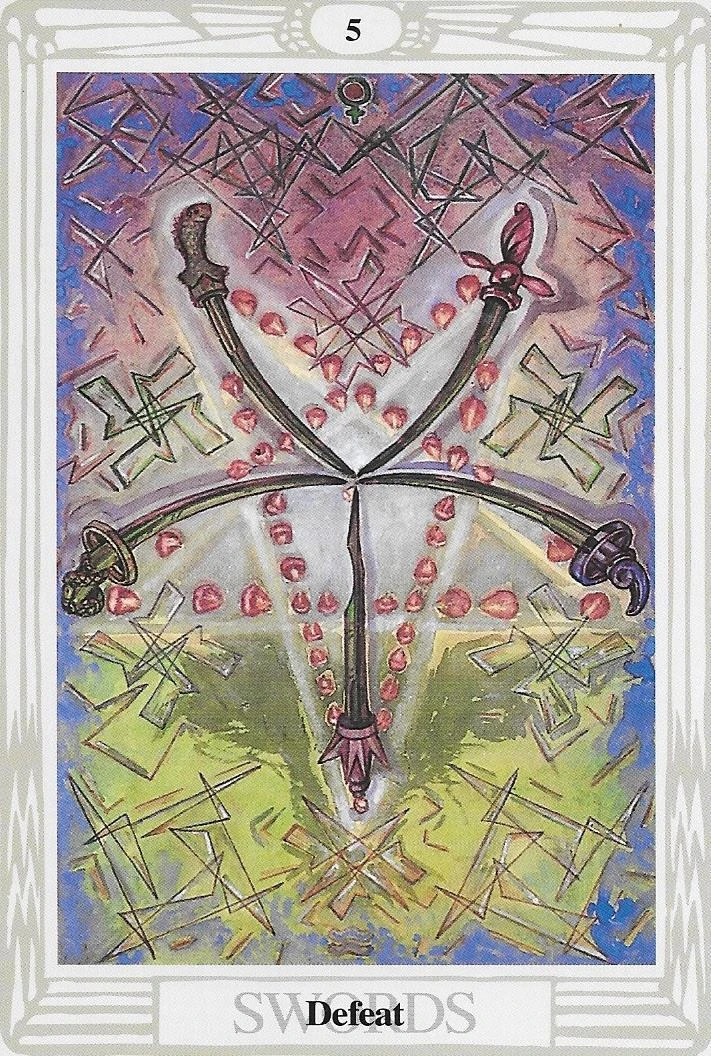
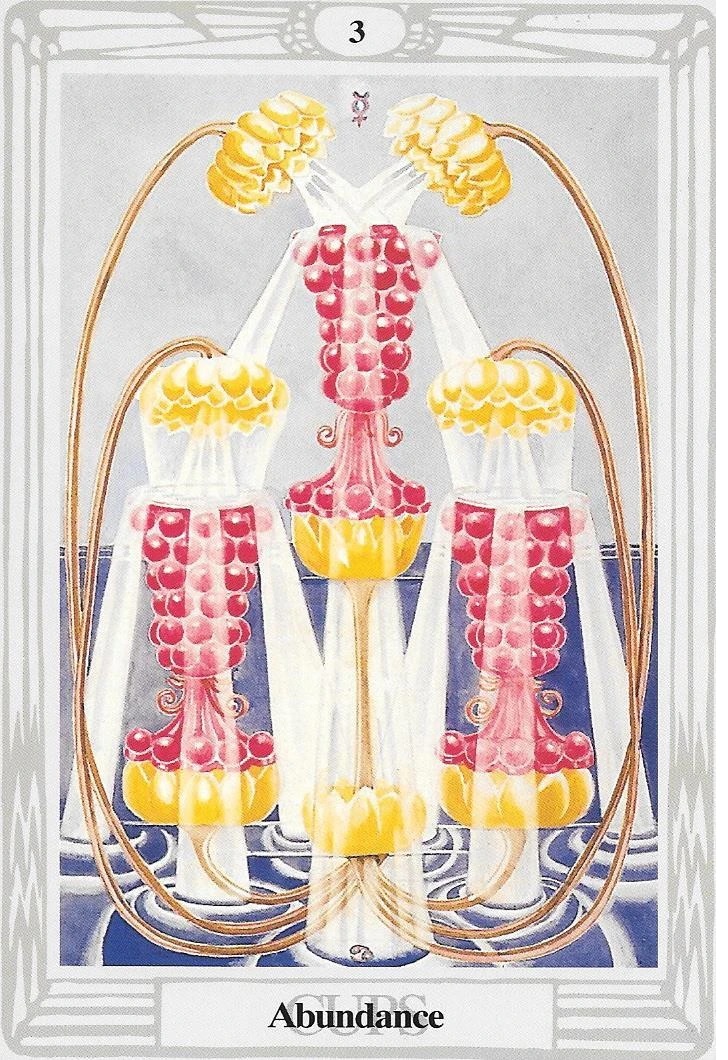
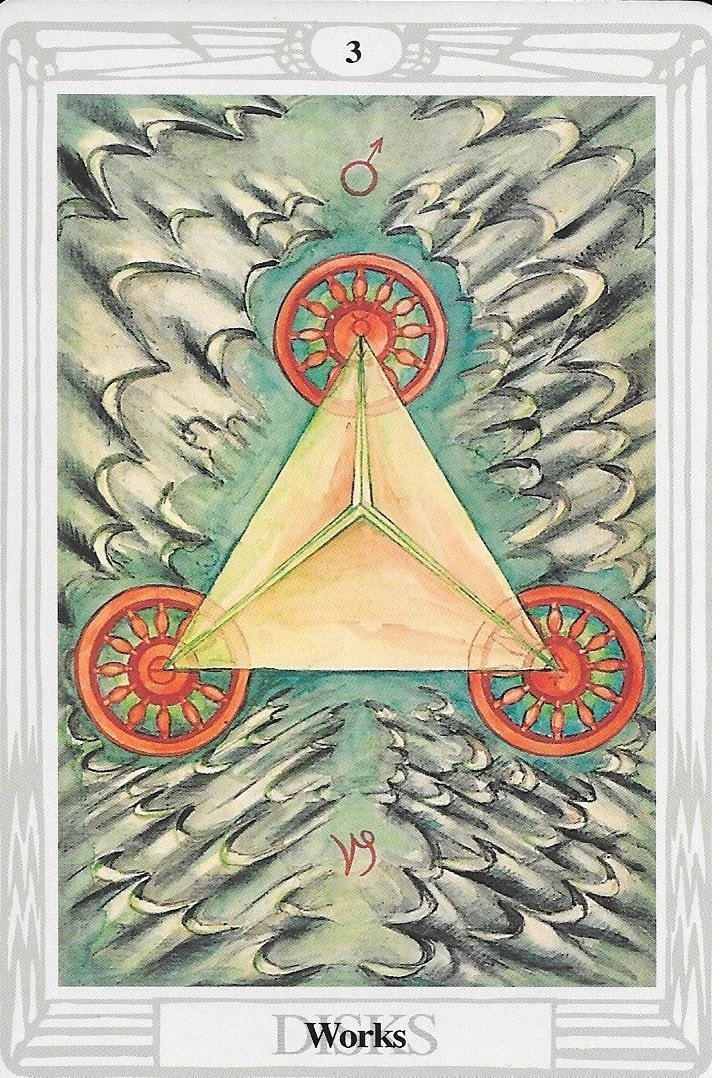
So in this scenario what looks like a planned social gathering of friends might look like there could be serious disagreement and even conflict, that the Five of Swords and Four of Disks are weakened because of their ill dignified status, would probably mean that despite some disagreement (we can’t ignore these cards) everyone still gets along great and has a good time.
But what about this example below?


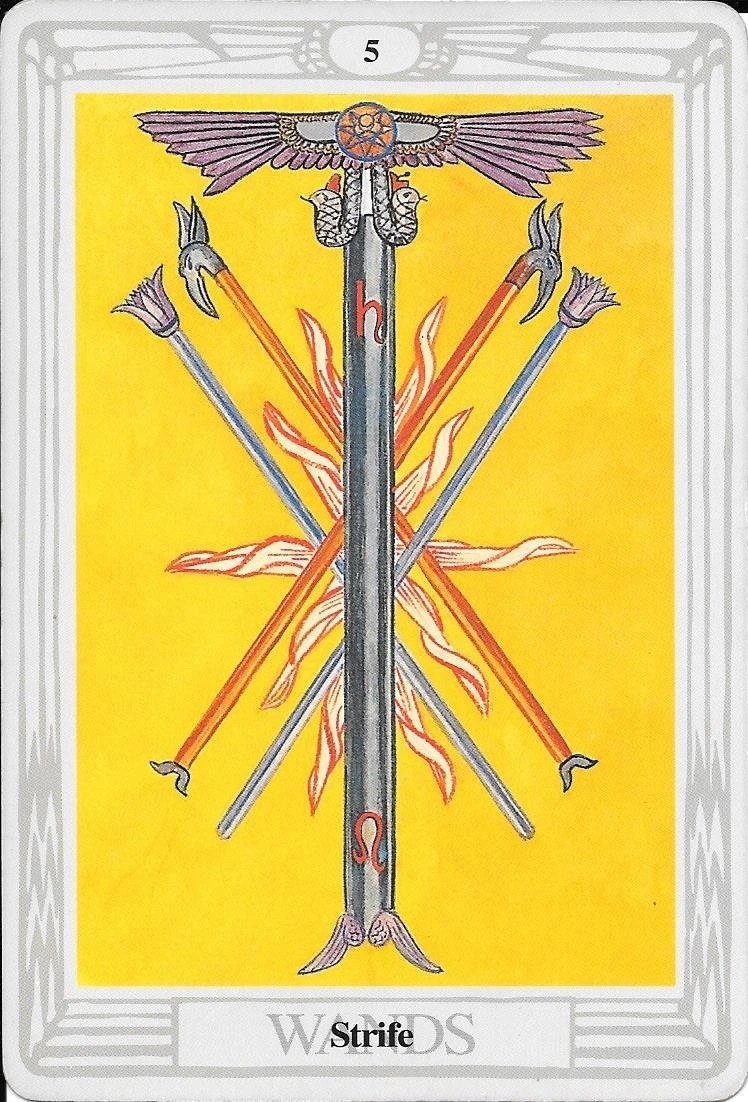
Yikes!! There might be some serious fireworks between friends here. Why? Well if we use the rule of Elemental Dignities, the Air to the left and the Fire to the right strengthen each other so increasing their influence over the middle Water card. This middle Water card will be even further unhappy with the impact of Fire (Water and Fire do not get along), and even though it’s ok with the Air to the right of it, when it’s the Five of Swords…….. Therefore, the Five of Swords and Five of Pentacles will be too much for the Three of cups and will have a massive say when these friends get together.
Hopefully, you can see what has happened here using the Elemental Dignities within a reading. Always remember that while the element might be happy, the cards themselves are telling a different story about your client.
Here is another example below:
Card of a Water element – Card of a Fire element – Card of a Water Element
Fire is going to be very unhappy here! Water and Water really strengthen each other and swamp Fire who is weakened by both and thus does not have much of a say in proceedings. However, for your client just like before, this might be a perceived ‘good’ thing as well as a ‘bad’.
In the illustration below, this is a spread that your client would be pleased with. The ten of wands having a limited effect moving forward and not being something they need to worry much about, whereas the Six of Cups with the Two of Cups which will be much more prevalent much to their delight.
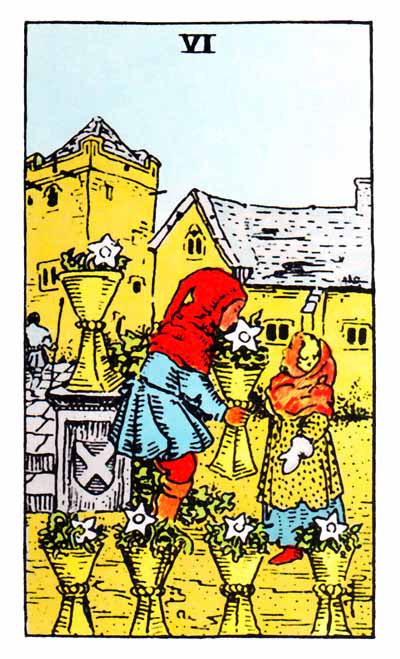
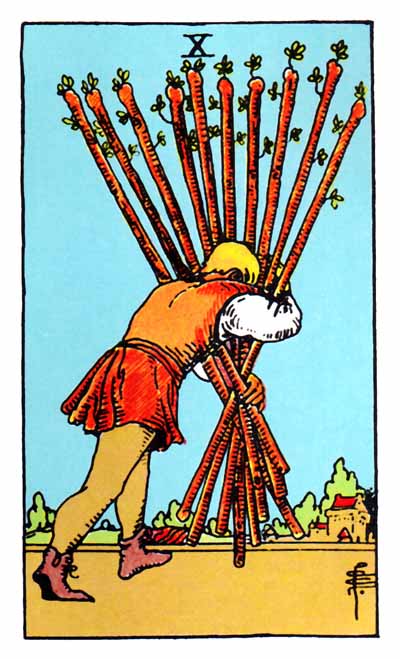
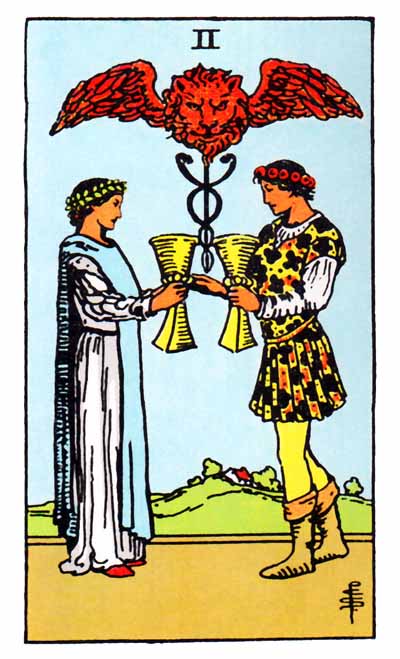
However, in this illustration below the opposite would be true, even though the elemental layout is the same!!!!
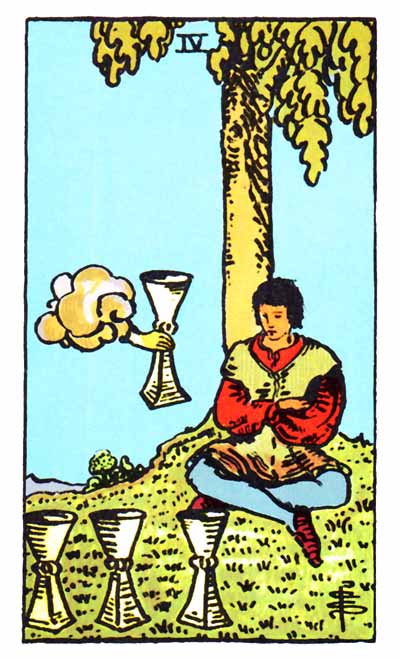
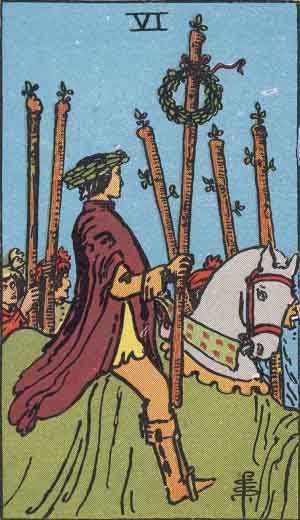
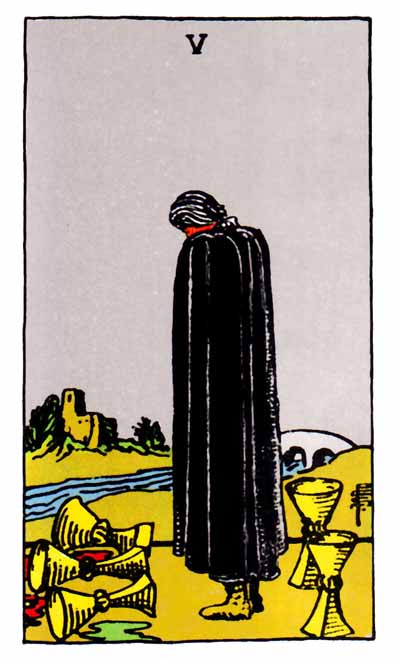
Hopefully, the above give you a good breakdown of how you can use the Elemental Dignities within in a spread and how it might make you look at cards a bit differently. Remember though, all Elements balance and harmonize each other. This being the case, it is important to be aware of the Element that is missing, and that goes for any spreads you do, whether or not you are using the Elemental dignities.
But what about the Aces and Court Cards? What role do they play in Elemental Dignities?
Well, when is comes to the Aces, they are exceptions to the rule of working with Elemental Dignities. This is because the Aces in Tarot represent the source of the Element. For this reason, they are not affected by the influence of the other Elements around them. The reason for this is again based in Qabalah. We associate Aces with Kether, which is the first Sephirah within the Tree of life, thus representing the Spark of creation. The impulses of other Elements within your spread will not affect it when it is this high on the Tree of Life.
Court Cards are a different beast entirely and are a little more complex. When looking at the Court Cards it’s clear that they still follow their Element e.g. The Queen of Cups represents Water as she is still in the family of Cups, likewise the Knight of Wands (Thoth Deck) represents Fire as this is the suit he came from.
Where it gets a little more confusing when using the Court Cards though is because we also associate each INDIVIUAL card with an Element. So, Knights/Kings represent Fire, Queens represent Water, Princes/Knights represent Air and lastly Princesses/Pages represent Earth.
So, for example, the Knight/King of Wands would be Fire of fire, while the Queen of Swords would be Water of air, representing her individual element with that of the suit she reigns over.
Therefore, if we were to use Elemental Dignities, and we pulled a Court Card out we have to look at both of its elements and see how they relate to the rest of the cards in the spread.
Let’s look at the example below to get more of an understanding on how this works.
Air card – Knight/King of Cups (Fire of water) – Fire card
Applying the rules as before, we look at the outside cards which support and thus strengthen each other. They then have a powerful influence over our Court Card, which is placed centrally. This is going to heighten the Fire aspect of the Court card and while the Water gets some support from the Air, the reality of is it won’t have much say here because of the forceful presence of Fire. With someone like the King of Cups it’s going to add even more instability to its nature, but someone who instead of expressing this just internally as this card normally would will now be potentially on the lookout for a destructive argument to add to their woes.
Using Elemental Dignities with Court Cards takes some practice, but as long as you have a good foundation with what Element gets along well with, you can’t go too far wrong.
Last, you might remember from Part 1 that each Major arcana also applies to an Element. However, whilst some may disagree with me you can NEVER weaken a Major Arcana card in a reading. These are always transformative cards for your client and so should be always playing a big part in any reading.
Hopefully, in the last three sections you have seen how you can use Elemental Dignities in your readings either for yourself or your client. Remember, they are not necessary to give a good reading, but they can give you a greater depth the more you feel comfortable with them.


